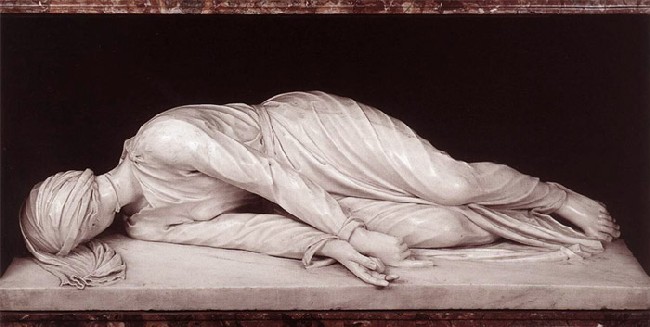[Revised Aug. 13, 2008 11:20 to reformat the material]
This blog is about a common practice among oblates — personalizing the books and materials we read for the Divine Office. This blog is about my recent project to replace card-stock section dividers I made for the book Benedictine Daily Prayer. See the footnotes for background information.
Anyone who is familiar with the book Benedictine Daily Prayer will tell you — often with a groan and a little smile — that if you use this book and similar books, there is a lot of flipping back and forth between sections. BDP does not have all the material needed for each day in one place. If it did, the book would be several volumes instead of one handy volume.
BDP comes with ribbons, but I found them difficult (I could never remember what section each color represented).
I eventually decided that ribbons did not work for me and I needed a better solution.
I tried some stick-on tabs, but while that helped find the various sections of the book, I still needed movable dividers.
About a year ago I made a set of 12 card-stock dividers with tabs. I typed particular Psalms or antiphons on some of the dividers. I loved the way it made finding things so much easier.
Through time, the card-stock tabs became worn and recently I replaced the 12 dividers I made a year ago and even added four new dividers for new texts or sections. The new-improved version of dividers still uses card stock, but now I use tabs from Tabbies. I use an ultra-thin Sharpe permanent colored marker to write the name of the section on the Tabbies. I use Tabbies all the time in my work, but originally thought Tabbies would be too big and bulky, but recently my wife suggested using plastic tabs. She was right.
So, the Benedictine Daily Prayer I use has been spiffed up with some new section dividers that will make it easier for me to have the text I read at hand with less flipping.
I felt downright monkish as I took card-stock, scissors, a ruler, pencil, and made the new hand-made dividers with often-read material. OK, I also used the computer to type the text. But if there were computers in the middle ages, I am sure every monk would have had one too.
_____________________________________
Footnote 1
Benedictine Daily Prayer is a breviary — a book of prayers for daily use. The prayers are primarily the Psalms and Hymns and Bible readings placed in a structure based on ancient monastic traditions.
Another book I use is the very user friendly (no flipping) "Benedictine Weekly Psalter," by Scott Knitter (who has a liturgy blog). Scott's book has the Psalms and canticles in daily order — it is wonderful companion to the BDP because BDP does not use all the Psalms.
Benedictine Daily Prayer is in the tradition of previous books published by monasteries (in this case St. John’s Abbey, Collegeville, Minnesota) “which sought to provide the English-speaking world an unofficial ...edition of the Divine Office for those who sought to pray with the Church in a more simplified manner.”
You can see the Table of Contents and some of Biblical readings in BDP at AmazonOnline Reader. Thank you Amazon.com
Here is an overview and example of a Divine Office. In Footnote 2 is a brief history of the Divine Office and why it is prayed. Its roots go back about 3,000 years.
Footnote 2:
“The custom of reciting prayers at certain hours of the day or night goes back to the Jews, from whom Christians have borrowed it. In the Psalms we find expressions like: "I will meditate on thee in the morning"; "I rose at midnight to give praise to thee"; "Evening and morning, and at noon I will speak and declare: and he shall hear my voice"; "Seven times a day I have given praise to thee"; etc. (Cf. "Jewish Encyclopedia", X, 164-171, s. v. [see article on "Prayer in the Jewish Encyclopedia" and the paragraph heading Number of Prayers in that article]). The Apostles observed the Jewish custom of praying at midnight, terce, sext, none (Acts 10:3, 9; 16:25; etc.). The Christian prayer of that time consisted of almost the same elements as the Jewish: recital or chanting of psalms, reading of the Old Testament, to which was soon added reading of the Gospels, Acts, and Epistles, and at times canticles composed or improvised by the assistants.”
Above material is from the classic 1917 Catholic Encyclopedia in the article on the Divine Office.
Monday, August 11, 2008
The Crafty Oblate. A Benedictine Oblate blog.
Subscribe to:
Post Comments (Atom)










Alert oblates wil know that the daily reading of the Rule of St. Benedict for August 10 is about the monks who are craftsmen — and how they should practice their crafts with all humility.
ReplyDeleteWhat you may not know is that I made the new section dividers for my Benedictine Daily Prayer on August 10, but did not read the August 10 daily reading of the Rule until August 11. :-)
Do you want to encourage praying the Divine Office?
ReplyDeleteI’ve just created a badge for blogs and websites.
Please have a look here:
http://www.liturgy.co.nz/ofthehours/badge.html
Let me know if there are any issues with this – size, etc.
Blessings